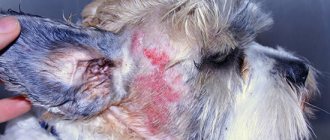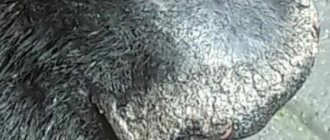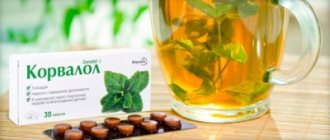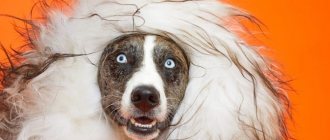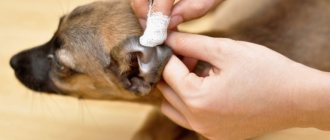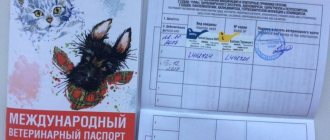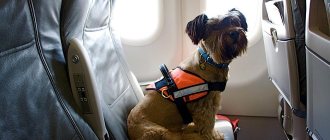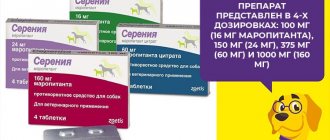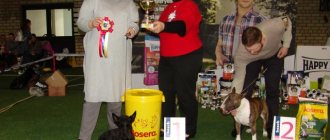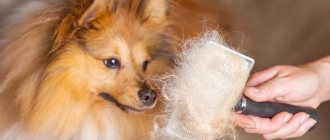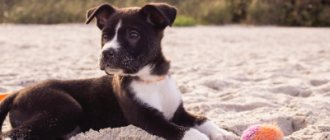Why does she shed so much?
- Fact 1:
Guard hair, protective layer. The one that forms a chic fur coat - Fact 2:
Undercoat. Shorter and softer than guard hair. Visible if you part the fur on the animal’s body with your hands - Fact 3:
Tactile hair. Simply a mustache, one of the pet’s sense organs. - Fact 4:
Change of coat in dogs is inherent in nature.
Anyone who keeps a four-legged canine pet knows that shedding is an unpleasant but inevitable process. And while the animal’s old fur falls out and a new one grows, the owners sometimes lose a considerable part of their nerve cells. It is best for those owners whose charges live on the street or at least belong to the shorthair variety.
What is wool cover
Beautiful appearance is one of the most common reasons why future dog owners choose a particular breed. Thick, silky wool, which is so pleasant to run your hands through and stroke, brings unforgettable pleasant sensations during tactile contact.
For a dog, wool is not only a beautiful fur coat to satisfy the owner’s aesthetic taste. For an animal, hair is primarily protection. From climatic conditions, parasite bites, skin damage.
Dog hair consists of three categories:
- Guard hair, protective layer . The one that forms a chic fur coat, so pleasing to our eyes and protecting the dog from all of the above negative factors.
- Undercoat . Shorter and softer than guard hair. Visible if you push apart the fur on the animal’s body with your hands. Serves as thermal insulation.
- Tactile hair . Simply a mustache, one of the pet’s sense organs.
The animal's whiskers do not change to new ones throughout its life. Only the main coat and undercoat are renewed. A newborn puppy has no guard hair, its body is covered only with soft undercoat. Over time, it will fall out and a real fur coat will grow. The thickness, density, length of both the main and secondary hair depends on the type of dog. Some breeds have no undercoat at all.
LiveInternetLiveInternet
Why do we need to know this? It's very simple - different types of coat require different grooming (frequency of washing, combing, trimming, cutting, various cosmetics, etc.). In order for your pet to not only look good, but also be healthy, it is necessary to correctly select the entire range of grooming procedures specifically for its coat type.
The main factors that determine the type of coat: 1. Hairlessness 2. Character of hair growth 3. Hair length 4. Hair thickness 5. Hair crimp Various combinations of these factors determine the entire variety of dog coats . 1. Hairlessness
A number of mutations have occurred in dogs leading to the development of hairlessness, noted in different parts of the globe. There are a number of breeds of hairless ( hairless ) dogs, differing in the nature of the residual hair , size, texture of the coat, etc. (Examples of breeds are the Xoloitzcuintle , Peruvian Orchid , and the Bissinian Desert Dog , Turkish Greyhound , African Elephant Dog , Indian Rampur Dog , Chinese Crested , American hairless terrier , etc.)
Chinese Crested
The degree of hairlessness within a breed can vary greatly. This is due to varying degrees of gene expression and other hereditary factors. Residual islands of fur on the dog’s body can be in the form of a “crest”, “plume”, “mane”, “socks”. The thickness of the coat can also be completely different.
2. Nature of overgrowth
Dogs can vary greatly in this regard. Some have the same length of fur throughout the body, while others have different lengths in different parts of the body. Based on this characteristic, they distinguish between dogs with a “wild” type of coat , dogs with a “breasted” type and a mixed type with various variations in one direction or another.
German Shepherd. Wild type coat
Some breeds that are close in appearance to their wild relatives - huskies , shepherd dogs , etc., retain the “wild” or, rather, “normal”, natural type of coat: two-tiered fur ( awns and undercoat ) and unequal length and texture of wool on different areas of the body. Typically, this is a short, close-fitting coat on the legs and face, with longer, coarser guard hair on the withers, back, upper hind legs, tail and sides. This arrangement of hair is optimal for a wild animal. The coarser awn protects the undercoat from getting wet. In some long-haired breeds that have retained the “wild” type of coat, the hair in these places becomes especially long, thin and silky, partially losing its protective purpose and turning into decorative hair that forms fringes (collar, fringes, pants, dewlap on the tail). Such are, for example, Spitz, Collie, etc.
Shih Tzu. An example of a breeding type dog
“ Big-chested ” dogs have uniform hair growth throughout the body, legs and face ( Commanders , poodles , soft terriers , Shih Tzus , South Russian Shepherds , etc.). This type of coat requires more care than the “wild” type.
Afghan. An example of an intermediate coat type
The intermediate type of coat is manifested in uniform growth of hair on the body and limbs, with short hair on the muzzle (sometimes a beard and mustache grow). This includes breeds such as cockers and other spaniels , Afghans , etc.
3. Hair length
The next factor that determines coat type is hair length. There are long-haired , short-haired , and medium-length dog breeds . Long-haired breeds may retain pronounced differences in the topcoat and undercoat (collies, retrievers, Newfoundlands) or have almost no undercoat (setters). In the longest-haired dogs (Yorkies, Afghans, Maltese, Shih Tzu), the guard hairs are practically no different from the undercoat and are more similar in structure to human hair.
sky terrier
4. Hair thickness
Hair can have different thickness and stiffness, as well as the degree of adherence to the body. Smooth-haired and wire-haired are divided into separate groups . The last category includes schnauzers , wire-haired terriers (Airedale, Fox, etc.), wire-haired dachshunds , griffins , etc. The coat of wire-haired dogs has a number of specific features that determine the grooming of these dogs. Guard hairs have a special structure: they have a relatively thin end, a thick middle part with a thick covering layer, and a much thinner base. They can be straight or with a so-called break . This hair reliably hides the short and soft undercoat. Hard wool hardly gets wet and is easily cleaned of mechanical impurities. The peculiarity of such hair is that it lingers in the hair follicles for a long time and, dying, does not fall out. Molting as such is practically not expressed. Therefore, such dogs need to be trimmed .
griffon
5. Hair crimp
Bullets. Corded wool
In addition to varying lengths and thicknesses, dogs' hair can come in a variety of shapes. Straight hair has a straight shaft with only a slight bend at the point of expansion. Curved hair has a shaft with a gradual bend in one direction. A hair with a break has a shaft with a sharp bend in one direction. Wavy hair has a shaft that deviates from the axis in both directions. Curly or spiral hair is twisted to one side and forms tight rings or spirals.
Bichon Frize
Thus, various combinations of the listed factors determine the entire variety of dog coats. Knowing what type of coat your dog has is essential to choosing the right grooming routine and cosmetics for your dog.
In addition to the listed types, groomers divide all breeds into the following groups (according to the various grooming procedures required by these breeds):
— wire-haired terriers and schnauzers and other breeds that require trimming (griffins, wire-haired dachshunds, Jack Russell terriers, etc.); - so-called “soft” terriers (Kerry Blue, Wheaten, Irish Terriers, Bedlingtons, etc.); - poodle; — cockers and Afghans; - hairless breeds; - uncut breeds (Yorkies, Maltese, Shih Tzu, Spitz, setters, Labradors, short-haired and smooth-haired dogs).
Ironically, the most frequent visitors to dog beauty salons are representatives of the group of non-cutting breeds - Yorkshire terriers, lapdogs, Shih Tzus , etc. precisely due to the specificity of their coat. Their fur grows throughout life and provides unlimited creativity for the groomer and dog owner. One has only to make a reservation that shorn representatives of non-shorn breeds are not allowed at exhibitions, with the exception of show rings and hairstyle competitions.
(Based on materials from the book “Skin and Fur of a Dog” by M. Sotskaya)
ragassa05
»
DOGS DANDY NEWS
How many sheddings per year is considered normal for a dog?
The change of coat in dogs is inherent in nature. An adult, healthy individual that has no deficiency in vitamins, minerals, macro- and microelements sheds twice a year (autumn/spring). The process takes several weeks and is absolutely painless and invisible to the animal (but not to the owner). The first time a dog changes its coat is at a young age (3-10 months). The “newborn” undercoat falls out completely, if it still remains, the hair structure becomes “adult”, the density inherent in the breed appears, and the final color of the animal appears.
In natural conditions, animals are sensitive to temperature and daylight hours. The molting process for them is an adaptation to the environment without loss of health. In the fall, in the process of changing its coat, the animal forms a “winter” warm undercoat and a thick, fluffy coat for reliable protection from wind and bad weather. In the spring, the fur coat is shed and the turn of the “summer outfit” comes, lighter, not so thick.
Pets do not need to prepare so carefully for the change of seasons. With a balanced diet and if the loss is not caused by some disease, they experience the so-called permanent molting. Since the biological rhythm of domestic animals is disrupted, they lose hair little by little all year round.
Diseases that cause hair loss
If hair falls out regardless of the season of the year and in unnatural volumes, then this is almost always a sign of some kind of disease. “Hair pathology” differs from natural hair loss in its condition. The coat becomes dull, looks unhealthy and unkempt, and falls out in clumps. There can be many reasons for such conditions:
- The dog has a clear deficiency of essential nutrients.
- The animal's liver is affected by hepatitis.
- Disorders of the gastrointestinal tract, kidney function.
- Metabolic disorders.
- Worm infestation.
- A state of depression or severe stress (longing for the owner, illness, etc.).
- Immune and autoimmune disorders.
- Frequent exposure to water and bathing products (when the fatty protective layer of the follicle is washed away, the hair begins to “hurt”, weakens and falls out).
Excessively active and uncharacteristic hair loss in a pet requires examination by a specialist and determination of the cause of the disorder. The doctor will prescribe medication, a complex of vitamins, and advise a balanced diet.
Sheds. What and how should the owner do?
- It is necessary to comb the coat daily with a special brush . This will help speed up the loss of old hair and activate the growth of new hair. Brushing also stimulates blood circulation in the upper layers of the skin, allowing more nutrients and vitamins to reach the hair follicles. The coat becomes smoother, shinier and stronger. The more often you brush, the less often you will have to vacuum the carpet in your apartment.
- When hair loss is not associated with shedding, it is necessary to review the diet and add vitamins or minerals that strengthen the hair follicle. A veterinarian will help you balance your dog’s diet.
- To strengthen the coat, it is recommended to use a special product. The pet supply store offers a variety of conditioners . They are applied to the dog’s wet fur and washed off after 10-15 minutes. Frequent bathing will not help speed up shedding. You need to wash your pet at the same frequency as usual. You can use a special shampoo with protein, which creates a thin protective film on the surface of the skin.
- If the fur falls out in clumps, and scabs or ulcers form in its place, you should not try to solve the problem yourself. It is urgent to show the animal to a doctor. This is a sign of illness.
Types of dog hair and what breeds are they?
The coat of dogs has a wide variety of colors and textures.
A dog's coat is made up of two types of hair:
- guard hair - coarse, hard, rather long, forming the outer part of the coat;
- short, thick, soft downy hair that forms an undercoat that protects the animal from exposure to low temperatures.
Not all dogs have an undercoat, but it is important for northern breeds. Wool plays a large role in the aesthetic perception of the dog, and also performs a protective function; in addition, the appearance of the coat reflects the general health of the animal. The color of the coat is determined by the distribution of pigment throughout the hair and is associated with the pigmentation of the nose and skin. It can be solid, combined or modified.
What to scratch with?
- To remove tangles from the undercoat, you will need a comb made of hardened steel; it would be nice if it was coated with nickel.
- Where a metal tool is not suitable, a more delicate slicker brush will come in handy. Suitable for use in delicate areas.
- A glove-shaped brush is good at removing dead hair from a dog’s body.
- You can quickly rid your beloved pet of dead hair by using a furminator after bathing. The tool should be moved along the growth of the fur, carefully and without pressure.
Important! The dog should not have tangles, which means that before the procedure it is necessary to comb out the hair with a comb or metal comb. If this is not done, the pet will be in too much pain.
Is it time to shed or when does it happen?
The very first coat changes by 1.5 months, and in some breeds the color of the coat also changes, becoming darker or, conversely, lighter.
The first age-related shedding in dogs begins no earlier than 6 months of age, during which the downy coat changes to a harder and denser one. In some pets, the fur takes several years to develop and becomes characteristic of adult animals only after several molts.
However, in some cases, the first age-related shedding in dogs can begin at 3.5-4 months, when the guard hair begins to grow. The process of hair change can last up to a year, and in some breeds up to 2 years.
Some breeds have a long and heavy shedding period, while other dogs shed all year round, shedding small amounts of hair daily. Pets typically shed twice a year.
- In autumn . Usually in September, the light summer coat is shed and a thick, warm undercoat is built up, the pet visually increases in volume, becomes softer and fluffier;
- At the end of spring . Usually in May, the undercoat falls out. Spring shedding in dogs lasts less time than autumn shedding.
The timing of shedding in dogs varies, with seasonal shedding lasting about 1-3 weeks. For pets living in an apartment, the timing of shedding may change, and instead of a seasonal change, hair loss occurs all year round due to constant air temperature.
In heated and artificially lit houses, the animal’s brain does not receive a signal that a coat change is required; the pets’ bodies are not exposed to natural temperatures, especially if the animals spend most of their time in the apartment and walk very little. The body does not notice the change of seasons and an abundant period of molting does not occur. As a result, shedding occurs on a constant basis every day in small quantities.
Types of wool and care features
A significant difference in dog hair care is due to the different types of hair. Wool of different structure and quality requires completely different procedures and the regularity of their implementation. There are 6 types of wool classified.
Regular
The most common type of wool. Prominent representatives of this species: German, Belgian (Malinois), Central Asian (Alabai), East European Shepherd, Labrador, Moscow Watchdog, West Siberian Laika. Ordinary wool is easy to care for and does not require special equipment or waste of time. Regular brushing with a regular brush and washing as needed is sufficient. During the molting period, you can use a slicker and a furminator to speed up the process and facilitate the procedures.
Short
Representatives of short-haired or smooth-haired dog breeds with short guard hairs, with little or no undercoat. These include French and English bulldogs, boxer, Rottweiler, Doberman pinscher, bull terrier, pit bull terrier and American Staffordshire terrier, pug, chihuahua, etc.
Caring for the coat of dogs of these breeds is not difficult, but constant. Dogs living in city apartments lose hair all year round. To ensure that the floor in your home is not covered with a thin layer of wool, you need to comb it out regularly. To do this, use a brush with soft flexible bristles (or a regular clothing one) or a rubber one. Do not use iron combs with long and sharp teeth. Complete each procedure by wiping the fur (only in the direction of growth) with a soft piece of suede. This will give a beautiful natural shine to the hair and a well-groomed appearance.
Long
Owners of long hair: Scottish Shepherd (Collie), Sheltie, Newfoundland, South Russian Shepherd, Tibetan Mastiff, Afghan Hound, Irish Setter, Spaniel, Pekingese, Shih Tzu, etc. In order for the pet to have a beautiful and well-groomed appearance, the owner will have to put a lot of effort into effort.
